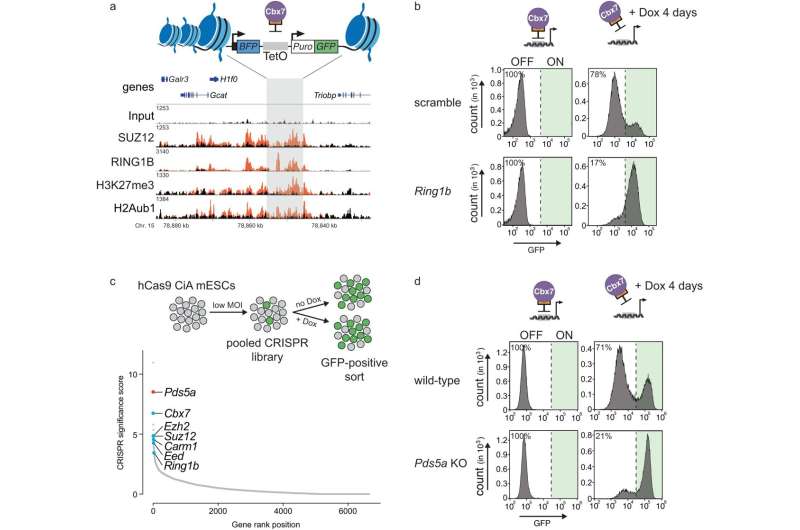This article has been reviewed according to Science X's editorial process and policies. Editors have highlighted the following attributes while ensuring the content's credibility:
fact-checked
peer-reviewed publication
trusted source
proofread
Stem cell study throws our understanding of gene regulation for a loop

The blueprint for human life lies within the DNA in the nucleus of each of our cells. In human cells, around six and a half feet of this genetic material must be condensed to fit inside the nucleus. DNA condensation is not random. To function properly, the genetic material is highly organized into loop structures that often bring together widely separated sections of the genome critical to the regulation of gene activity.
In a paper published in Nature Communications, USC Stem Cell scientists from the laboratory of Oliver Bell address how these loops can help repress or silence gene activity, with potentially far-reaching effects on human health.
"A carefully orchestrated regulatory machinery is required to ensure every cell in the body is expressing its correct gene set to exert its dedicated function," said the study's first author Daniel Bsteh, who began the research at the Institute of Molecular Biotechnology of the Austrian Academy of Sciences (IMBA), and completed it at the Keck School of Medicine of USC during his Ph.D. He is currently the Liquid Biopsy Core Manager at the USC Norris Comprehensive Cancer Center.
In the study, Bsteh and his colleagues specifically examined developmental genes that are repressed by molecules known as Polycomb Repressive Complexes 1 and 2 (PRC1 and PRC2). PRC1 and PRC2 are regulators that prevent developmental genes from becoming activated at the wrong time or in the wrong cell, which has been shown to cause changes in cellular identity, leading to developmental defects, or transformation into cancer cells.
When PRC1- and PRC2-repressed genes come together, the genome forms loops. Loops are known to play a role in activating genes, but it has been more challenging to study how loops might help repress genes. This is because of the interdependence of loops with a different type of gene repressing mechanism known as histone modifications.
Through a genetic screen conducted in mouse embryonic stem cells, the scientists identified a protein, PDS5A, that modifies loops without affecting histone modifications. This enabled Bsteh and colleagues to specifically study the effects of loops and 3D genome organization on gene silencing.
The loss of PDS5A disrupted the loops—and therefore the long-range interactions between repressed developmental genes. Further, looping genes together maintains the silent state. When PRC1- and PRC2-repressed genes are physically separated, eliminating the loops, normally silent genes become activated in aberrant ways.
"PDS5A is a subunit of a larger protein complex called cohesin, which is the master regulator of 3D genome organization," said Bell, an assistant professor of biochemistry and molecular medicine, and stem cell biology and regenerative medicine, and a member of the USC Norris Comprehensive Cancer Center.
"Cohesin mutations are known to drive several human diseases, including developmental disorders and cancer. What's striking about our discovery is that it reveals a dependence of PRC 1 and PRC 2 activity on the precise regulation of 3D genome organization by cohesin, suggesting that 'cohesinopathies' may be linked to aberrant developmental gene silencing."
Additional authors include Hagar F. Moussa, Georg Michlits, Ramesh Yelagandula, Jingkui Wang, and Ulrich Elling from the IMBA.
More information: Daniel Bsteh et al, Loss of cohesin regulator PDS5A reveals repressive role of Polycomb loops, Nature Communications (2023). DOI: 10.1038/s41467-023-43869-w
Journal information: Nature Communications
Provided by Keck School of Medicine of USC



















